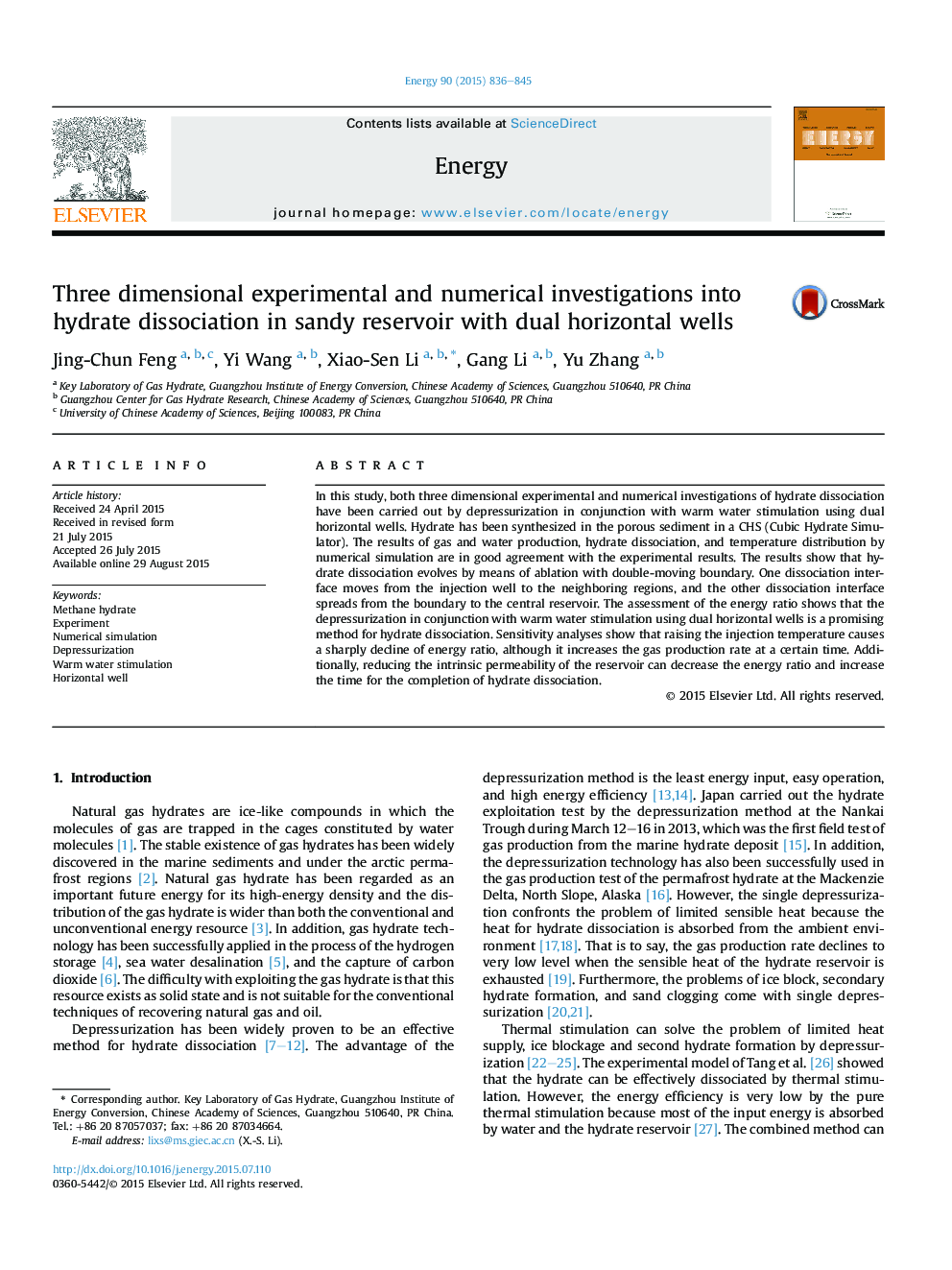| Article ID | Journal | Published Year | Pages | File Type |
|---|---|---|---|---|
| 1731784 | Energy | 2015 | 10 Pages |
•Hydrate dissociation by experiment and numerical simulation is carried out.•Depressurization in conjunction with warm water stimulation is employed.•The dual horizontal wells are set as the well configuration.•The results of numerical simulation and experiment agree well.•Hydrate dissociation evolves by means of ablation with double-moving boundary.
In this study, both three dimensional experimental and numerical investigations of hydrate dissociation have been carried out by depressurization in conjunction with warm water stimulation using dual horizontal wells. Hydrate has been synthesized in the porous sediment in a CHS (Cubic Hydrate Simulator). The results of gas and water production, hydrate dissociation, and temperature distribution by numerical simulation are in good agreement with the experimental results. The results show that hydrate dissociation evolves by means of ablation with double-moving boundary. One dissociation interface moves from the injection well to the neighboring regions, and the other dissociation interface spreads from the boundary to the central reservoir. The assessment of the energy ratio shows that the depressurization in conjunction with warm water stimulation using dual horizontal wells is a promising method for hydrate dissociation. Sensitivity analyses show that raising the injection temperature causes a sharply decline of energy ratio, although it increases the gas production rate at a certain time. Additionally, reducing the intrinsic permeability of the reservoir can decrease the energy ratio and increase the time for the completion of hydrate dissociation.
